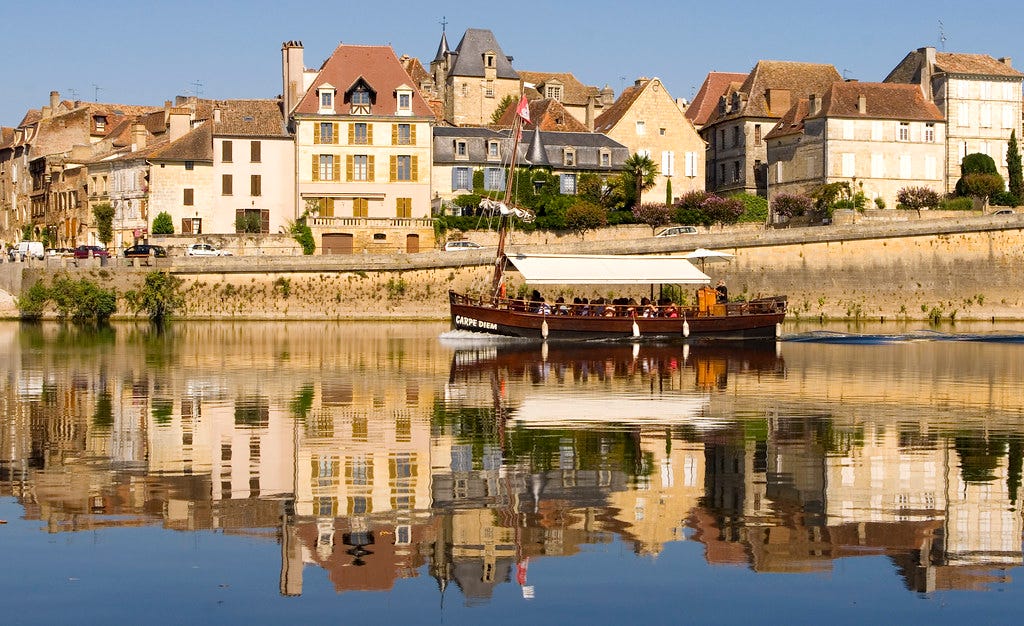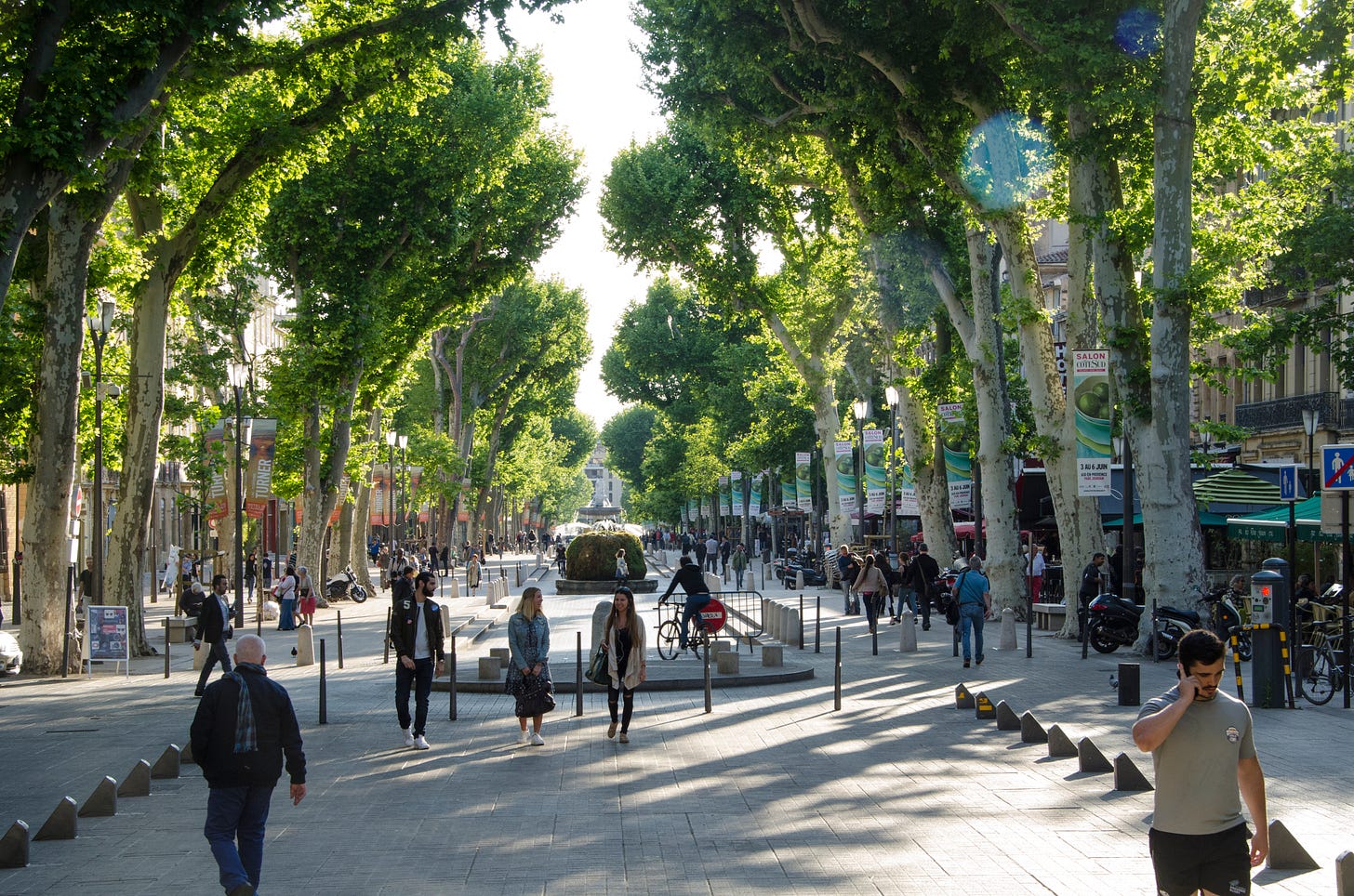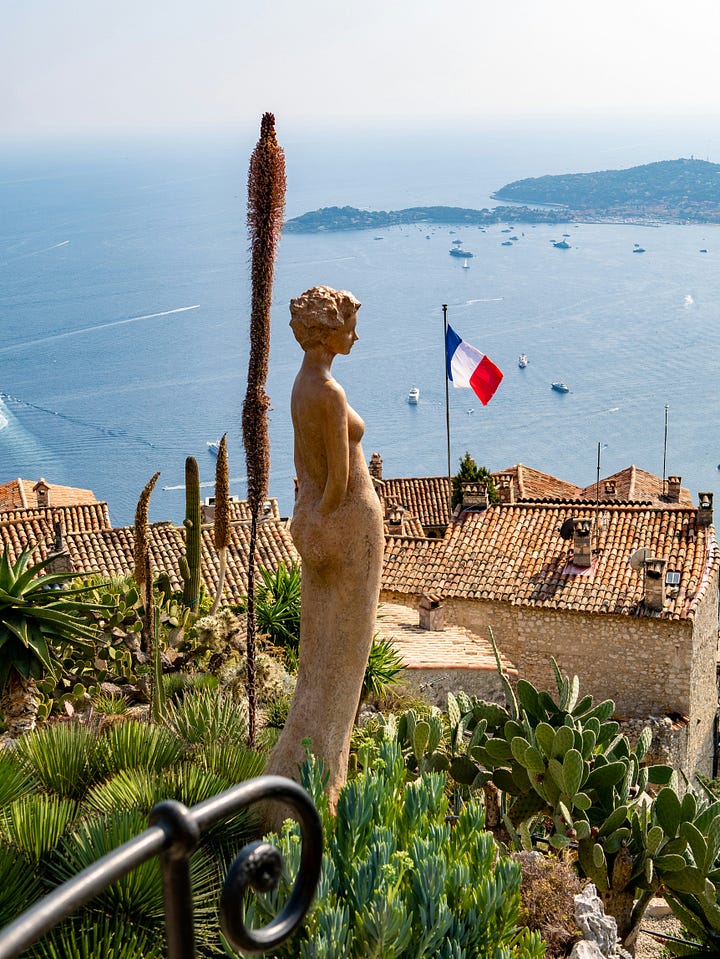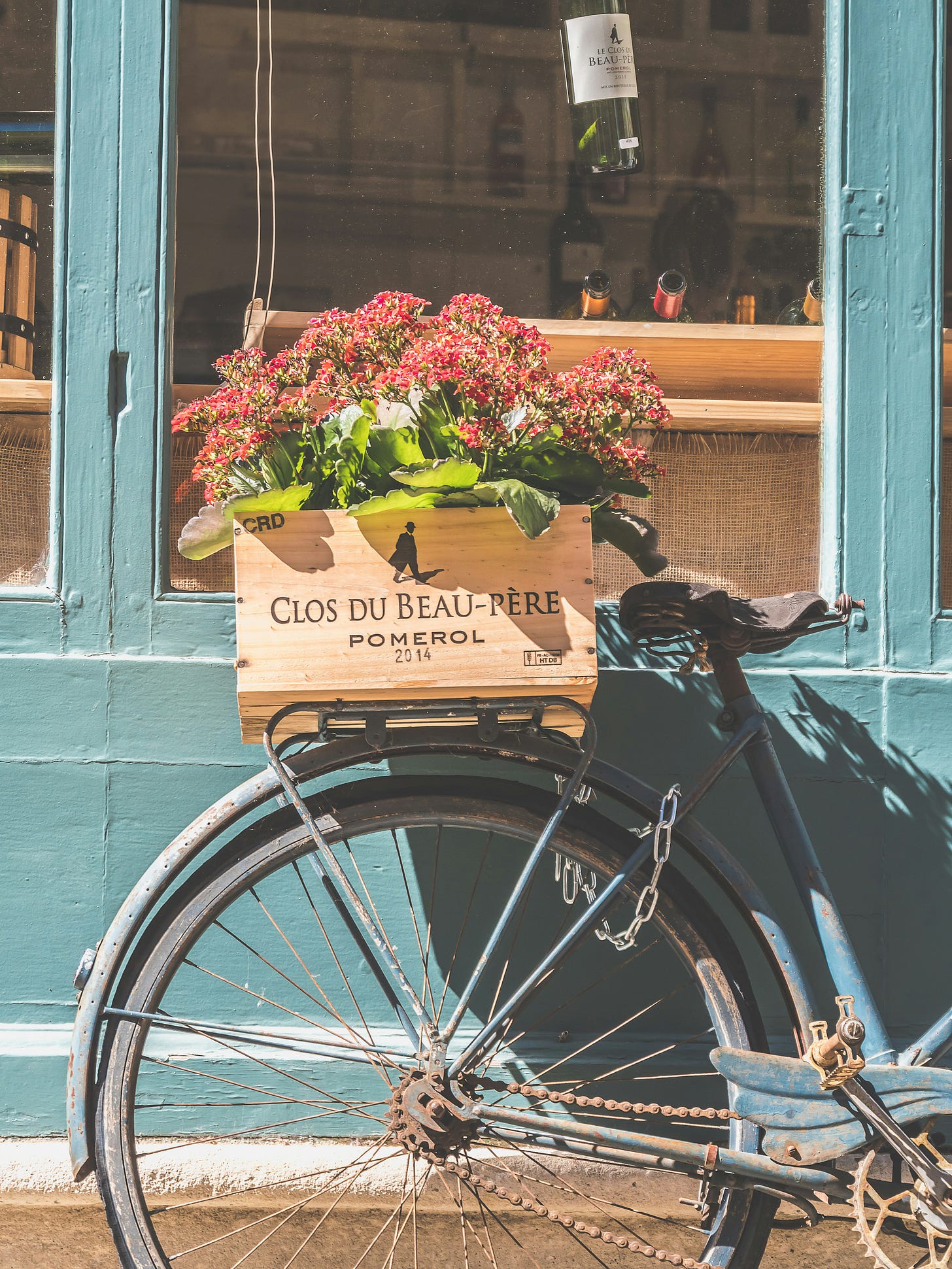Booklovers‘ Guide to the South of France
From Dordogne to the Côte d'Azur, here are top tips for literary-themed travels.

With sun, beaches, caves, and vineyards, some of the most touristed regions of France can be found in the southern part of the country: Provence, the French Riviera (aka Côte d’Azur), Dordogne, Bordeaux. But have you explored them through a literary lens? Inspired by the France-set thriller Creation Lake, by Rachel Kushner—The Travel Book Club’s July 2025 read—we share our picks for a booklovers’ tour of these celebrated lands.
Dordogne
Rachel Kushner’s Creation Lake is set in a fictional cave- and farm-filled region of France called Guyenne. It’s a ringer for swaths of the Dordogne, a real-life French département known for prehistoric cave paintings at Lascaux as well as for riverside castles, cobblestoned medieval villages, and old-world charm.
Kushner joins a cadre of writers, filmmakers, and other creatives inspired by this hilly region, which the French often call the Périgord. Sci-fi pioneer Jules Verne and 20th-century American novelist Henry Miller both holidayed here. In his European travelogue The Colossus of Maroussi, Miller gushed: “This is the land of enchantment jealously marked by poets.”
In 1897, Edmond Rostand’s tragicomic play Cyrano de Bergerac turned a real-life 17th-century libertine into a long-nosed, poetry-spouting symbol of the region. Amid the half-timbered houses and medieval churches of the town of Bergerac, travelers can take selfies backdropped with a statue of Cyrano in the Place Pélissière or board a Dordogne River cruise on a gabarre, a traditional, flat-bottomed barge.
Villages such as Le-Bugue and Sarlat prove surprisingly full of intrigue and murder in the Bruno, Chief of Police series of cozy mysteries, by Martin Walker. Through more than 18 books, the crime-solving sleuth Benoît “Bruno” Courrèges hunts down truffle thieves and cave painting forgers amid bustling markets and dusty country lanes.
The region holds some 600 castles built between medieval times and the Renaissance. Among the most storied are the mountaintop Château de Beynac, once occupied by Britain’s King Richard the Lionheart, and Château des Milandes, a 13th-century Gothic fortress where the American entertainer Josephine Baker lived and adopted a “rainbow tribe” of children in the early 20th century.
The Dordogne’s landscapes also star in both American and European movies. Ridley Scott’s The Last Duel, about feuding noblemen in medieval France, saw Jodie Comer, Matt Damon, and Adam Driver shooting scenes at Chateau de Beynac and 13th-century town Monpazier. And cult hit The Brotherhood of the Wolf, a horror/history flick set during the French Revolution, was filmed amid the gabled roofs and gleaming stone ramparts of Château de Biron. —Jennifer Barger

Provence
Provence—where the sun casts a spellbinding light over lavender fields, honey-hued hamlets, and seaside cliffs—has long inspired not only legendary artists but also celebrated authors.
When Paul Cézanne was growing up in Aix-en-Provence, founded in 123 B.C. and the one-time capital of the region, his bestie was none other than Émile Zola. The “J’accuse” journalist set several novels of his Rougon-Macquart saga in a fictional place based on Aix. Now his bronze bust keeps a keen eye on Place Ganay, steps away from the town’s main boulevard.
Lined by plane trees and cafés and serenaded by fountains, the Cours Mirabeau was a key attraction for American food and travel writer M.F.K. Fisher, who spent several stints in Aix. “The delight of strolling its length at any time, in every season, has never ceased to charm, indeed almost to hypnotize,” she wrote in Map of Another Town. Fisher was also a regular at vibrant outdoor markets like the one at Place Richelme, where vendor tables are piled high with local specialties from goat cheeses and Cavaillon melons to herbes de Provence.
Current-day mystery novelist M.L. Longworth, an Aix resident for nearly 30 years, sends her sleuths all over town in her Verlaque and Bonnet books (adapted into the “Murder in Provence” TV series). Longworth herself often heads to bookstore-café Book in Bar, whose owner “has great recommendations for new releases.” Her other go-to literary spot? Librairie Le Bleuet, in the hilltop village of Banon (near Manosque, the hometown of Provencal novelist Jean Giono). France’s largest rural indie bookshop, it stocks more than 100,000 titles and hosts regular events. “Visiting this non-touristy part of Provence is a joy,” Longworth says.
British businessman turned author Peter Mayle usually gets the credit (or blame) for luring the tourist crowds. His 1989 bestseller A Year in Provence chronicled his restoration of a farmhouse near Ménerbes and his exploration of other postcard-perfect villages perchés, such as Gordes and Roussillon. Tour these in the off season, and stop by the Maison du Parc du Luberon in Apt to learn about the area’s wildlife, geology, and culture.
Part of Marseille, La Treille and its outskirts are where novelist-playwright-filmmaker Marcel Pagnol spent the childhood summers described in his delightful memoirs, later made into films (My Father’s Glory, My Mother’s Castle). Fans can walk the same path, the Chemin des Bellons, that his family used to reach their vacation home, and hike through the garrigue, or wild scrubland, where “thyme crackled beneath our feet, rosemary scratched our legs, and the sun made the white stones shine.”
From Marseille’s Old Port, it’s a short boat ride to 16th-century island fortress Château d’If, where the main character in Alexandre Dumas’ The Count of Monte Cristo is imprisoned. Take in the towers and courtyards—and sweeping views of the brilliant Provencal coast. —Brooke Sabin


French Riviera
The Côte d’Azur may be known as a playground for the rich and famous, but it’s also one for book lovers. From Menton on the Italian border to the low-key port town of Toulon, writers like James Baldwin and filmmakers like Alfred Hitchcock have found in these “fairy blue” shores, as F. Scott Fitzgerald wrote, fertile ground for mining stories.
When it comes to hotels, it’s hard to avoid the well-known Hotel du Cap-Eden-Roc, the real-life inspiration for the grand digs in Fitzgerald’s Tender Is the Night, and Hotel Belles Rives, Fitzgerald’s 1920s home, both in Antibes.
At newly remodeled Carlton Cannes, Hitchcock’s real-life backdrop for To Catch a Thief, travelers can post up at Bar 58. Sit by the bay windows for Croisette views and sip a “Negroni from the Barrel,” featuring bourbon barrel-aged Campari.
Near Cap d’Ail, the Sentier du Littoral is a lesser known loop that winds along the coast between coves and hidden villas for 2.2 miles. It’s the perfect spot to ponder the obsessive themes that fill the pages of Patrick Suskind’s Perfume—The Story of a Murder. It just may inspire a short drive from Cannes or Nice to Grasse, where the International Perfume Museum and boutique perfumeries, such as Evanescence Grasse, offer deeper dives into the book’s aromatic topics.
In Nice, wander the 18th-century cobbled alleyways of Irish writer Tobias Smollet’s Travels Through France and Italy. Leaf through a copy while sitting at a sun-dappled outdoor table at Brume café. After, head to the seafood stalls of Place Saint-François for just-caught seafood and an aperitif while people-watching.
Readers mesmerized by Jane Alison’s Villa E can tour the real thing, Villa E1027, in Roquebrune-Cap-Martin. The novel fictionalizes the rift between Irish designer Eileen Gray and French architect Le Corbusier, after he broke into Gray’s villa to paint seven murals against the stark-white interior, while nude. Today four murals remain, and Le Corbusier’s own wooden cabin next door is a UNESCO World Heritage site. —Anne Kim-Dannibale

Bordeaux
For some literary lovers, a bottle of Bordeaux and a great book make for a perfect pairing when traveling through this southwest France wine region. But even travelers who don’t drink will appreciate the historic architecture of Bordeaux, the cobblestoned streets of St-Émilion, and the region’s writerly connections.
Sixteenth-century philosopher Michel de Montaigne is best known for his wide-ranging Essays. His family estate, Château de Montaigne, looks plucked from a fairy tale and is open for guided tours less than an hour’s drive from the city of Bordeaux.
Another noteworthy French philosopher from this region, Montesquieu (1689-1755) lived and wrote at his moat-encircled ancestral home, Cháteau de la Brède. His political treatise The Spirit of Laws strongly influenced the framers of the U.S. Constitution.
In Bordeaux itself, the Museum of Aquitaine tells the story of the ancient region of Aquitaine, with collections ranging from prehistoric to contemporary times. Possibly the most famous historical figure you’ll come across is Aliénor of Aquitaine, later known as Eleanor, queen of England. (She was married to Henry II.) The Summer Queen, by Elizabeth Chadwick, is a deeply researched historical novel portraying her remarkable life.
Heading out from the city, you might find the place names familiar from reading wine lists: Pauillac, Sauternes, Pomerol. Sign up for a guided tour with wine tastings or rent a car to explore the vineyards and wine chateaux. The most famous estates, such as Château Margaux, require advance booking to visit. For a look behind the scenes at the business of Bordeaux winemaking, pick up Noble Rot: A Bordeaux Wine Revolution, by William Echikson.
Travel writer-slash-wine nerd Ceil Miller Bouchet, who is based in Bordeaux and Iowa City, recommends the Chateau Lynch-Bages vineyards near Pauillac. The restored village of Bages “is the easiest place to have a quick bite or coffee, or to go shopping, when visiting the Left Bank wineries.” Le Bazaar Bages is “the best French art de vivre gift shop in Bordeaux wine country,” Ceil says. “You’ll want to stock up on the well-curated selection of Made In France items, from cookware to house decor to books. Plus wine, of course.” —Amy Alipio





What a great roundup! We just got back from Provence and we stayed in Menerbes (Peter Mayle’s village)!
On a train to France this minute. Nice timing.